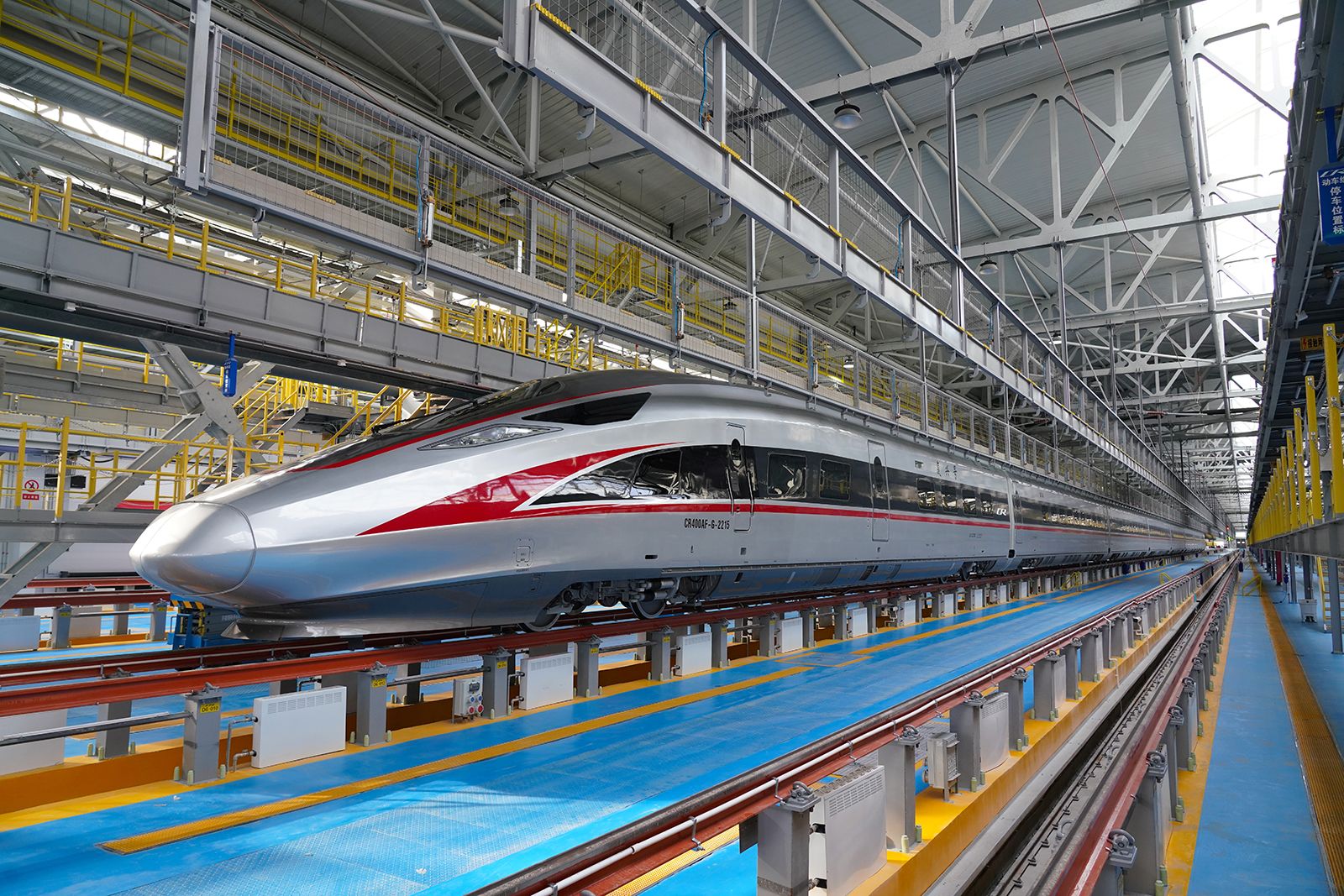Compared to the rest of the urban sewage system, levels of human waste compounds are hundreds or even thousands of times higher at railroad stations
According to South China Morning Post, 2008 saw the construction of China’s first high-speed railway, a 100 km line with a top speed of 350 km/h that connects Beijing and the northern port city of Tianjin.
According to researchers hired by the government to address the situation, the rapid expansion of high-speed rail in China has resulted in an increase in the amount of human waste carried by trains, endangering the sewage treatment facilities for the network.
“The processing capabilities of waste treatment facilities are declining, some of them already out of service”, according to a team from the Chinese State Railway Group lead by senior engineer Xin Siyuan, their research was peer-reviewed and published in the journal Railway Standard Design.
After spending a year intensively observing the waste water quality at a significant high-speed rail station in Beijing, Xin’s team stated that they were quite concerned with the outcomes.
They discovered that, especially on public holidays, the quantities of organic substances suggestive of human waste were hundreds or even thousands of times greater in the station than they were elsewhere in the municipal sewage system.
“The waste water from sealed toilets on trains has a higher content of suspended solids, organic matter (COD), nitrogen, and phosphorus than general domestic waste water”, Xin’s team wrote.
“With the increase of the amount of waste water from sealed toilets, the existing sewage treatment facilities can no longer meet the current urban network discharge standards, and it is urgent to establish more complete waste water treatment facilities”, they added.
The group has developed a potential remedy for the issue that uses microorganisms to break down human waste more effectively than current techniques.
The nation’s high-speed rail network has expanded to 42,000km in less than 15 years, which is long enough to encircle the globe. It is currently the most often used kind of intercity transportation. According to government statistics, the 1,300 kilometer line that connects Shanghai and Beijing, for instance, carries more than 200 million people annually.
The bathrooms on China’s high-speed trains are spotless, roomy, and frequently furnished with conveniences like electric-powered doors. When the train’s waste collection tanks are full, a machine pumps the waste out to be processed at a waste treatment plant, which is typically found in a railway station.
The latest analysis, however, indicates that the early designers of these facilities may have miscalculated the passenger flow. However, not only China is struggling with the issue of human excrement on trains. Indian Railways, which was criticized for its habit of depositing garbage directly onto its train tracks, spent allegedly a decade outfitting all passenger coaches with bio-toilets that decompose human waste.
Yet unlike Indian passenger trains, which move at an average speed of roughly 50 km/h, Xin’s team claims that neither the time nor space on board China’s high-speed trains is adequate for waste to organically breakdown. A person typically produces and releases 128 grams (0.28 pounds) of waste and 1 liter (0.26 gallons) of urine per day, according to some research.
Even while not every passenger uses the restroom, a train that runs nearly nonstop all day can produce a lot of waste in total. Conventional waste treatment facilities are typically made of concrete and contain numerous machinery. According to Xin’s team, these devices are intricate, unstable, and prone to breakdown when put under the intense pressure of a high-speed rail line.
According to the study, human waste from trains can be problematic if it enters the urban sewage system. For instance, large amounts of organic matter and nutrients like nitrogen and phosphorus in human waste can result in eutrophication if they enter bodies of water. This causes an excessive amount of algae growth, which can lower the water’s oxygen content and endanger aquatic life.
Moreover, untreated human feces may contain dangerous organisms like parasites, viruses, and bacteria that can lead to infectious disease outbreaks. According to the report, the research team experimented for more than three months with various waste samples taken from the train station in order to develop a practical remedy for the excrement issue facing the rail network.
In order to speed up the breakdown of waste, their laboratory setup featured a number of reaction rooms, each with a different environmental setting, such as varied oxygen levels. Then they combined various microorganisms that had been specifically chosen for their capacity to degrade organic materials and extract nitrogen from waste water.
Among them were ammonia-oxidizing bacteria, which change ammonia into nitrite, which is then changed into nitrate by nitrite-oxidizing bacteria, a different class of bacteria. Furthermore, they employed denitrifying microorganisms, which turn nitrate into nitrogen gas and subsequently release it into the atmosphere.
They also discovered that they could increase the contact between bacteria and the organic materials in the sewage by growing bacteria on the surface of a plastic sheet and then exposing them to waste water. Older biological waste water treatment techniques, in contrast, relied on bacteria suspended in water to break down organic materials.
Even during times of high rail activity, the scientists claimed their approach could remove up to 95% of some important organic pollutants such ammonia nitrogen. The team claims that some industrial suppliers have created products using their methodology. All-in-one products that are simple to install in a train station are among the most promising ones.
The new waste treatment devices treat waste water more effectively by combining various sewage treatment procedures into a single unit. The team also claims that they can be operated remotely or by AI on their own.
“The device has a small footprint, can be installed underground or above ground, is easy to install and has an attractive appearance”, they added.

